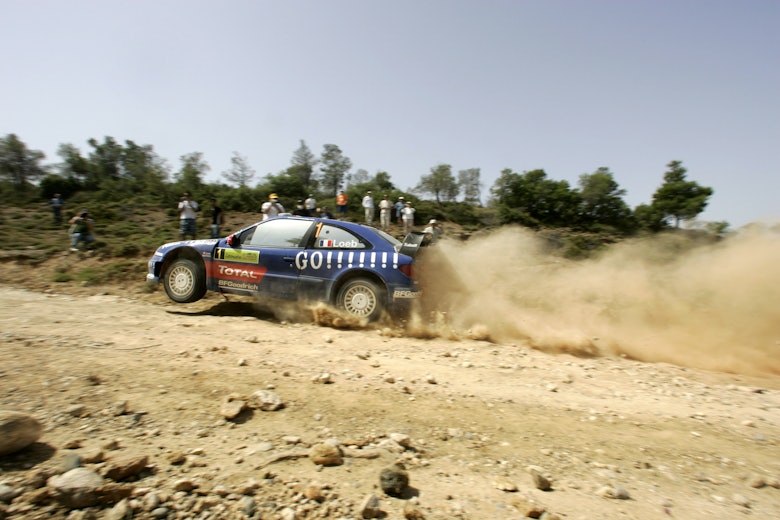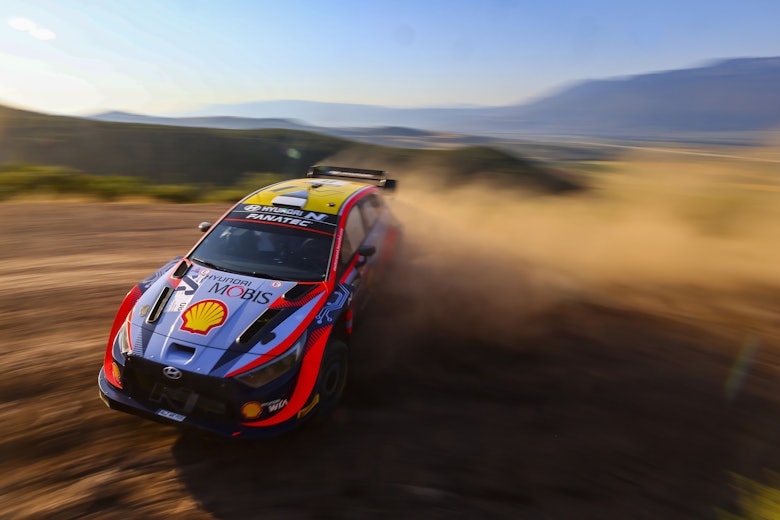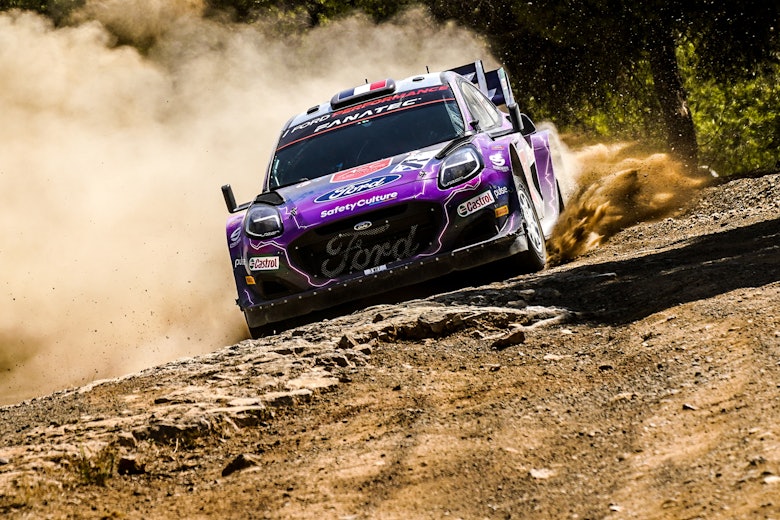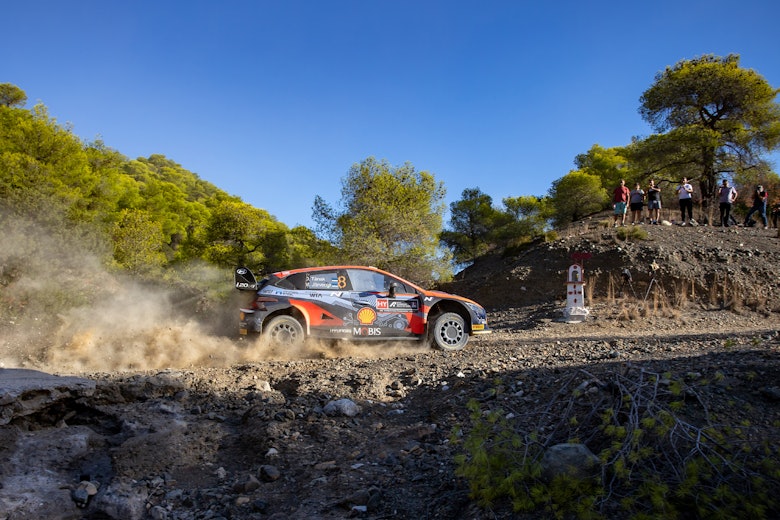Here’s a question for you: which aspect of the World Rally Championship played a key role at the Acropolis Rally – but didn’t exist 10 days before the rally, doesn’t exist now, but weighed the same as a Boeing 757 (or a blue whale) during round 10?
Any ideas?
It’s the bridge at the heart of the Olympic Stadium superspecial. The steel in the structure weighed in at 120 tons. That’s a weighty bridge. Especially when it’s only there for a fortnight.
A few more numbers that made Thursday night tick?
It took 10 days and 200 people – most of them working dawn until dusk – to make the 1.21-mile stage.
Beneath the 16 corners sat 1000 cubic meters of gravel and 10,000 square meters of plywood. Guiding the cars across the 7000 square meters of Tarmac were 1500 meters of concrete barriers.
All of this because of one man.
For those of you who haven’t met Greece’s deputy minister of culture and sport Lefteris Avgenakis, let me fill you in: the man’s on a mission to build sport – and the sport of rallying in particular – a long-term future in his nation. And with the full support of prime minister Kyriakos Mitsotakis, he’s doing a superb job.
It’s almost 3000 years since Greece held the Olympic Games for the first time, so it’s fair to say this is a country that gets sport. And this government gets the World Rally Championship. The Acropolis Rally means as much to them as it does to the WRC itself. It’s part of both fabrics.
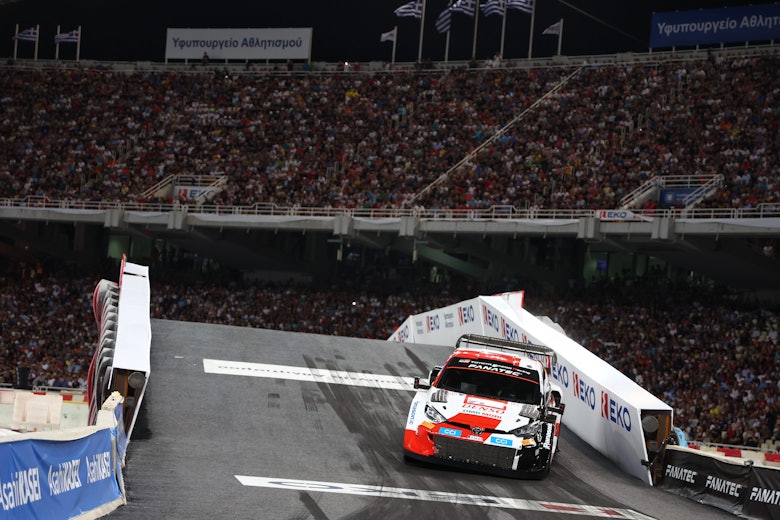
Central to that is informing and entertaining the public. Last week, you could take the tram for central Athens for €3 and pay €10 to watch the opening stage of a WRC round. It’s for that reason that 64,000 folk packed the place to the rafters and were informed and entertained.
“The minister called and said he wanted us to bring back the Olympic Stadium,” said rally director Pavlos Athanassoulas. “He told us he was sure we could do it. This was his idea. Once we got our head around the thing, we started to work on it.”
The stadium stage was, of course, nothing new. It was done in 2005 and 2006, so there was a blueprint.
“We didn’t follow any of what was done before,” said Athanassoulas. “OK, we needed to have the bridge to get the cars to cross over, but that was it. The biggest thing for us was to have the cars side-by-side for as long as possible, so the fans could see who was winning. We managed to get them alongside each other for 90% of the time.
“We were allowed into the stadium 10 days before the event and when you walk in there and see a football pitch in a nice stadium, really you begin to think about what you have taken on. Fortunately, we had some amazing help from the staff at the stadium and, like I said, the government and all the government departments stood shoulder-to-shoulder with us on this project.
“But still, the work was massive.
“People were genuinely in there from dawn until dusk, working all the time. Of course, there were some stressful moments, but when we were seeing the ticket sales really going well, we knew we were making something very special.
“There’s one point I want to make more strongly than anything else – and that’s the point that this is a team effort. I can’t name every person as I would really like to, but I have to thank them sincerely – every one of them. Without them, we would not have managed this.
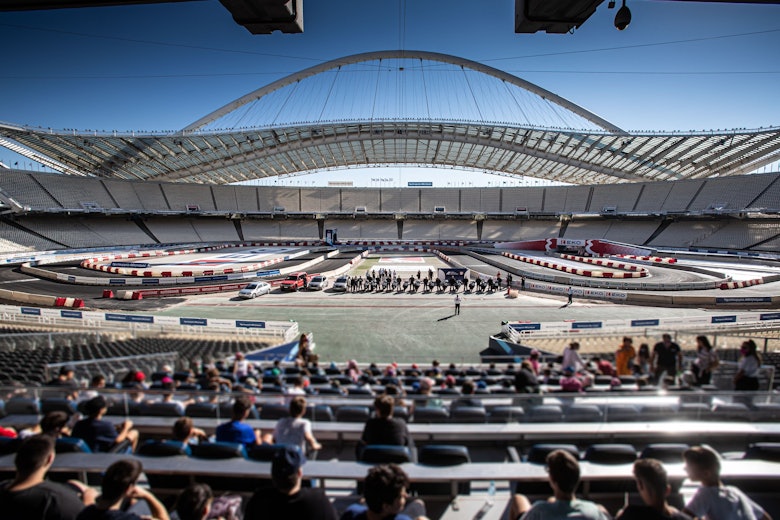
“And that goes for the minister as well, he was there right with us during the stage.
“Like you can imagine, we were there all day and when the stage started, everything went well. OK, Andreas [Mikkelsen] hit the barrier, but we knew this would be the most tricky part of the road.
“I’m thinking now, but actually I can’t find the words to say what the feelings were like when the stage was finished and the fans were all leaving the stadium. We planned so hard for this, but there’s always the unexpected that you can’t plan for.
“After the last person left, the team – including the minister – we were all there for another two hours until one in the morning. The feeling of elation and exhaustion was incredible. Honestly, we had no strength left, we were empty – but we were smiling.”
They weren’t the only ones. As they departed to a baking Athens evening, 64,000 smiles lit up the night sky.
Will it be back next year? Well, it’s the 70th anniversary of the Acropolis Rally, so expect something. Especially if minister Avgenakis has anything to do with it.



